Most simply, duct bank spacers support underground PVC conduits for cables most often used to power buildings or provide telecommunications. Duct bank spacers are necessary so conduits don’t bend or warp during installation.
To understand the value of underground duct bank spacers, it’s helpful to know about the system of duct banks they support.


An Expert is just around the corner.
With over 100 years of combined product knowledge and industry experience, we are confident our plastics experts can help you find a solution for your application.
An Introduction to Duct Banks
One way to think of duct banks is by comparing them to the mass of wires you might have behind your desk or entertainment center. Unless you’ve managed to go full-wireless, you probably have a bunch of wires leading from your devices to one or more power sources or internet servers. Some people keep these wires manageable by bundling them with zip ties or similar systems.
Duct banks work similarly but on a much grander scale. Large buildings can require miles of cable leading from the structure to their power, telecommunications, or data stream source. Those cables also need to be protected. Weather, animals, traffic, and other factors can all be a risk to the lines powering or providing connectivity to buildings.
You will often find extensive duct bank systems used for routing cables beneath and between data centers, hospitals, rail lines, airports, manufacturing facilities, and more.
Duct banks house cables with PVC pipes, or conduits, which are usually surrounded by reinforced concrete. This helps protect cables from environmental conditions, seismic stress, corrosion, and vandalism. This setup also allows for easier cable replacement via each end of a duct bank which can be accessed at their utility ends, at surface points where a horizontal run of duct banks turns vertical, or at a pre-planned service access position. The ducts themselves may only go only a short distance, such as under a road or much further to an industrial or public facility such as an electrical transmission station or secured data center.
What Duct Spacers Do
The wires behind your entertainment center don’t weigh much. However, the cables used to power a building and handle its telecommunications needs can weigh a considerable amount when added together. That’s where duct spacers come in.
To keep PVC conduits from sagging or becoming misaligned during installation, duct spacers support the conduit at regularly-spaced intervals to ensure the PVC stays level. This also keeps openings from inadvertently opening along the conduit joints, so they don’t accidentally let in moisture, dirt, or concrete.
Most commonly made from high-density polyethylene, underground conduit spacers vertically snap together from two pieces—a base and an intermediate—that slide horizontally along the duct bank for easy, secure onsite assembly. The duct bank spacers align easily and lock firmly together, so they don’t separate once installed. To keep the uppermost tier of duct banks from floating while being encased in concrete, another spacer can be added on top to serve as a cap.
Electrical duct bank spacers’ vertical and horizontal features can support heavy loads, maintain strong conduits, and provide a secure environment for a building’s underground cabling.
How Duct Banks and Spacers Are Installed
While the process is generally straightforward, it can be labor-intensive and cumbersome at times. Duct banks require proper installation to ensure long-term durability like any construction process. Installation requires contractors with knowledge and skill in every step of the installation process.
-
1. First, a civil contractor digs and shores up a trench of sufficient width and depth according to the appropriate plans or blueprints. Usually, an electrical contractor then lays in the PVC conduits and installs the duct bank spacers. This person also ensures the spacers are spaced out appropriately.
-
2. The number of spacers and the distances between them depend on the conduit’s size and length and the condition of the soil in the trench where the conduit is being laid. When positioned, duct spacers are either anchored into the ground with a reinforced iron rod or held in place with a carefully-placed wedge.
-
3. Once the spacers and PVC are in place, a civil or electrical contractor cuts, bends and installs steel reinforcements where needed.
-
4. Next, carpenters will put together forms to ensure concrete can be poured around the conduits. The concrete is then poured over and around the conduit, and the mix is checked for air pockets.
-
5. Because the conduits need to stay anchored to prevent moving out of position, air pockets are removed, and the concrete pour is checked for form and consistency.
-
6. The concrete is then left to harden until it is strong enough for the forms to be removed and the surrounding trench to be filled in. Rain or extreme temperatures can delay the pouring of the concrete.
Every step of installing duct banks needs to be taken with great care. If any concrete gets through open joins, it will harden inside the conduit and make it difficult or impossible to pass the wire cabling.
Seek Expert Help From Piedmont Plastics
Piedmont Plastics is a world-recognized wholesale distributor of plastic sheet, rod, tube, and film products. Our mission is to provide solutions to our customers by delivering expert product knowledge, local inventory, an array of value-added services, and a comprehensive team approach. Piedmont Plastics is committed to fielding the most knowledgeable sales team in the plastics distribution industry.
Find Out More
For more information on duct bank spacers and how they can benefit you, ask to speak with one of our industrial market specialists when you contact Piedmont Plastics today.
Get In Touch
